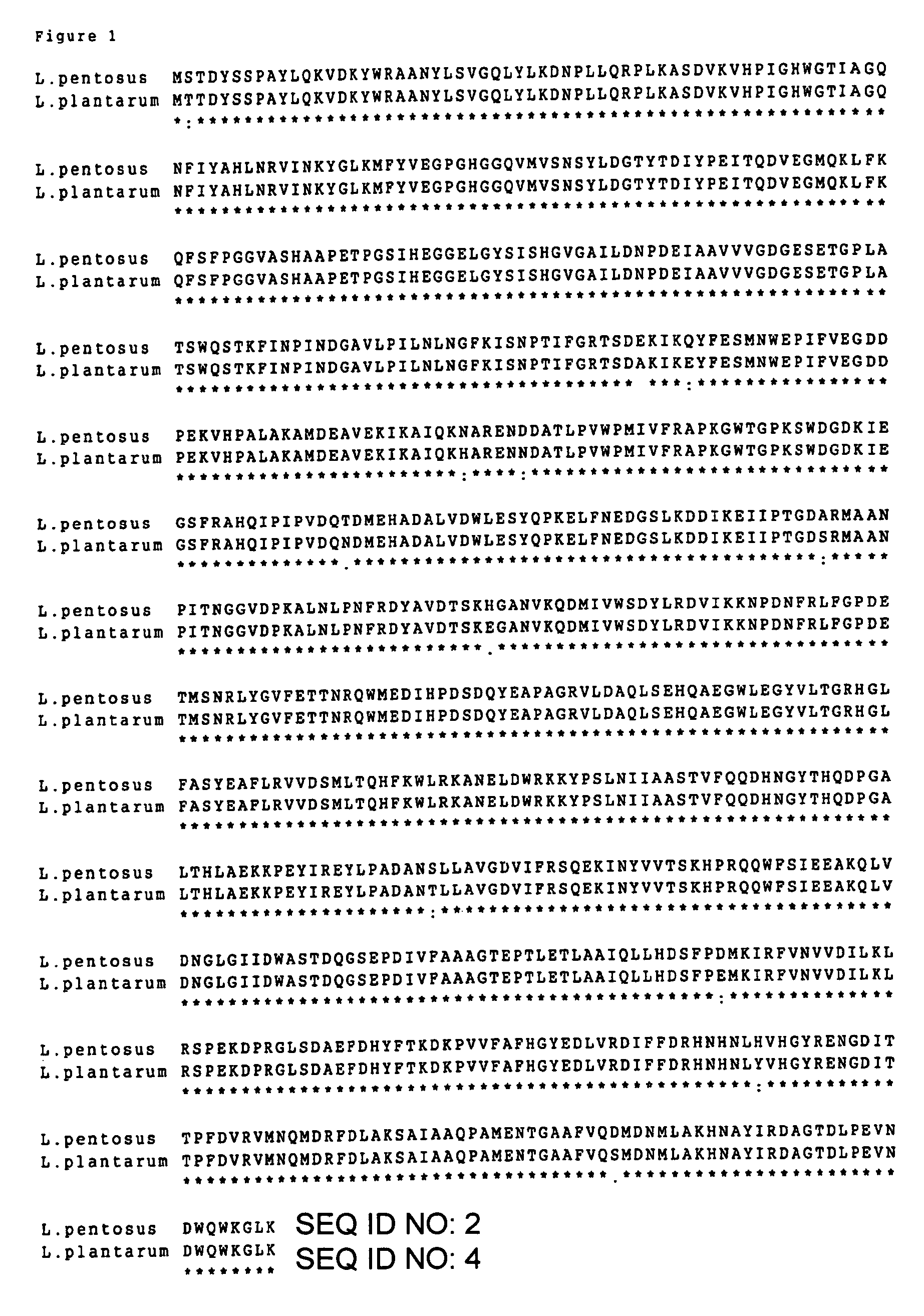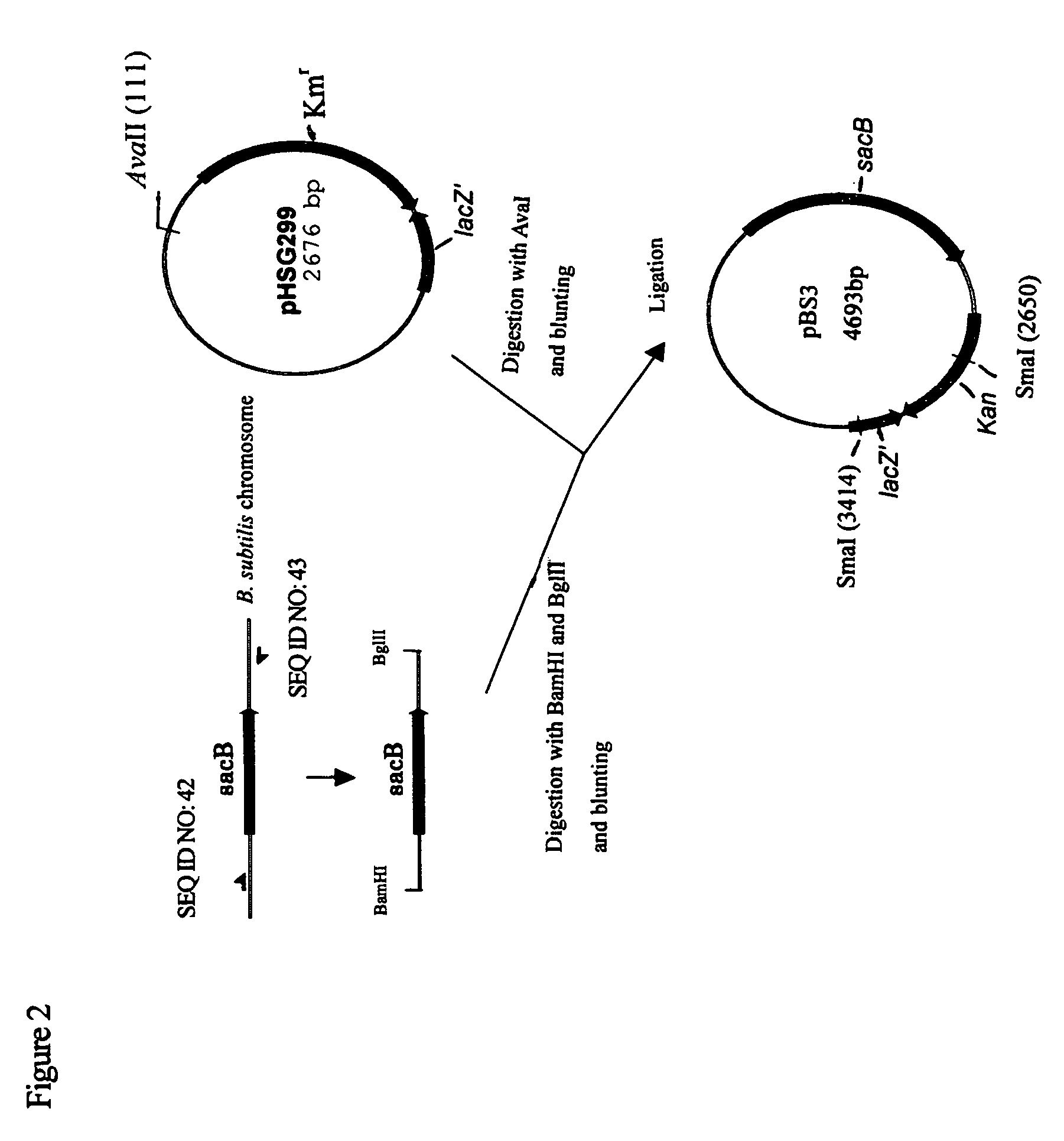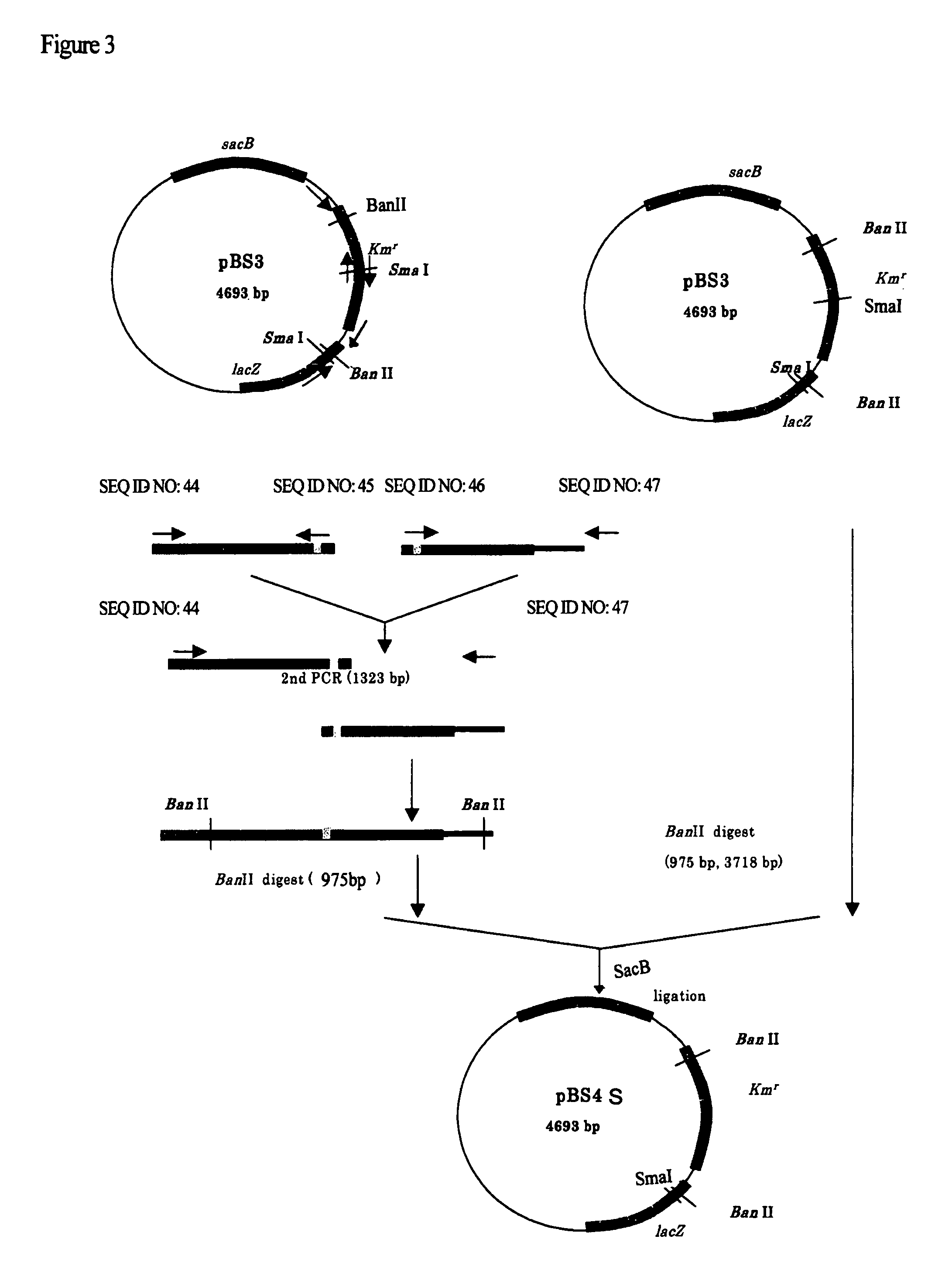Use of phosphoketolase for producing useful metabolites
a phosphoketolase and metabolite technology, applied in the direction of enzymology, lyase, carbon-carbon lyase, etc., can solve the problems of reducing the yield of useful compounds, and the effect of using the phosphoketolase gene for the elimination of carbon dioxide has never been reported, so as to improve the production yield of useful compounds
- Summary
- Abstract
- Description
- Claims
- Application Information
AI Technical Summary
Benefits of technology
Problems solved by technology
Method used
Image
Examples
example 1
Calculation of acetyl-CoA Formation by Bacterium with or without Phosphoketolases Activities
[0173]1. Reactions of Acetyl-CoA Biosynthetic Pathway which does not Involve Phosphoketolases Activities.
[0174]PTS system followed by glycolysis gives the following equation:
Glucose=PEP+Pyr+ATP+2 NADH
[0175]Phosphoenolpyruvate carboxylase encoded by ppc gene catalyzes the following reaction:
PEP+CO2=oxaloacetate
[0176]Pyruvate dehydrogenase encoded by pdh gene catalyzes the following reaction:
Pyr=acetyl-CoA+CO2+NADH
[0177]And final equation is:
Glucose=acetyl-CoA+oxaloacetate+ATP+3 NADH (A)
[0178]2. Reactions of Acetyl-CoA Biosynthetic Pathway which Involves Phosphoketolases Activities.
[0179]PTS system followed by glycolysis gives the following equation:
Glucose+PEP=fructose-6-phosphate+Pyr
[0180]Phosphoenolpyruvate synthase catalyzes the following reaction:
Pyr+ATP=PEP
[0181]Phosphoenolpyruvate carboxylase coded by ppc gene catalyzes the following reaction:
PEP+CO2=oxaloacetate
[0182]Fructose-6-phospha...
example 2
Calculation of Theoretical Yield of L-Glutamic Acid Production Using Bacterium with or without Phosphoketolases Activities
[0189]1. Reactions of L-Glutamic Acid Biosynthetic Pathway which Involves PTS, Glycolysis, and the TCA Cycle.
[0190]PTS+glycolysis:
glucose=acetyl-CoA+oxaloacetate+ATP+3NADH (A)
[0191]TCA cycle:
acetyl-CoA+oxaloacetate=2-oxoglutarate+NADPH+CO2
[0192]Glutamate dehydrogenase:
2-oxoglutarate+NH3+NADPH=glutamic acid
[0193]Final equation:
glucose=glutamic acid+ATP+3 NADH+CO2 (C)
[0194]Theoretical weight yield of L-glutamic acid is 81.7%
[0195]2. Reactions of L-Glutamic Acid Biosynthetic Pathway which Involves Glycolysis, Non-Oxidative PPC, and D-xylulose-5-Phosphate Phosphoketolase Only
[0196]Glycolysis and non oxidative PPC:
5 glucose+5 PEP=5 fructose-6-phosphate+5 Pyr, where
fructose-6-phosphate+ATP=2 GA-3P
2 fructose-6-phosphate+2 GA-3P=2 xylulose-5-phosphate+2 erythrose-4-phosphate
2 fructose-6-phosphate+2 erythrose-4-phosphate=4 xylulose-5-phosphate
[0197]Summary equation:
5 g...
example 3
Calculation of Theoretical Yield of Succinate Production using a Bacterium with or without Phosphoketolases Activities
[0230]1. Reactions of Succinate Biosynthetic Pathway which Involves PTS, Glycolysis, and the TCA Cycle.
[0231]PTS+glycolysis:
glucose=PEP+PYR+ATP+2 NADH
[0232]Phosphoenolpyruvate carboxylase:
PEP+CO2=oxaloacetate
[0233]Pyruvate dehydrogenase:
PYR=acetyl-CoA+CO2+NADH
[0234]Summary equation:
Glucose=oxaloacetate+acetyl-CoA+ATP+3 NADH
[0235]TCA cycle:
Oxaloacetate+acetyl-CoA=succinate+NADPH+NADH+ATP+2 CO2
[0236]Final equation:
Glucose=succinate+NADPH+4 NADH+2 ATP+2 CO2
[0237]or presuming that NADH=NADPH=2 ATP
Glucose=succinate+12 ATP+2 CO2 (F)
[0238]Theoretical weight yield of succinate is 65%.
[0239]2. Reactions of Succinate Biosynthetic Pathway which Involve Glycolysis, Non-Oxidative PPC, and D-xylulose-5-Phosphate Phosphoketolase Only
[0240]Glycolysis, non oxidative PPC, D-xylulose-5-phosphate phosphoketolase, phosphate acetyltransferase and phosphoenolpyruvate carboxylase gives s...
PUM
| Property | Measurement | Unit |
|---|---|---|
| temperature | aaaaa | aaaaa |
| temperature | aaaaa | aaaaa |
| concentration | aaaaa | aaaaa |
Abstract
Description
Claims
Application Information
 Login to View More
Login to View More - R&D
- Intellectual Property
- Life Sciences
- Materials
- Tech Scout
- Unparalleled Data Quality
- Higher Quality Content
- 60% Fewer Hallucinations
Browse by: Latest US Patents, China's latest patents, Technical Efficacy Thesaurus, Application Domain, Technology Topic, Popular Technical Reports.
© 2025 PatSnap. All rights reserved.Legal|Privacy policy|Modern Slavery Act Transparency Statement|Sitemap|About US| Contact US: help@patsnap.com



